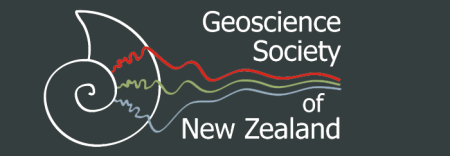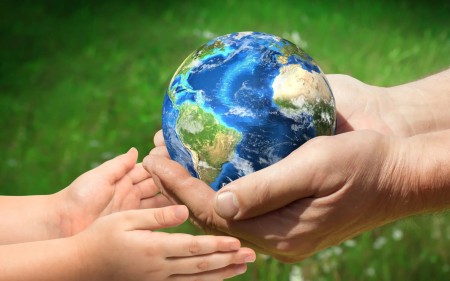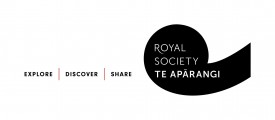Saving Earth Science
Universities unite to tackle falling enrolments
Representatives from universities around the country have been meeting to discuss ways they and the GSNZ might collaborate to address the falling numbers of students enrolling in undergraduate earth science courses in Aotearoa New Zealand.
This decline, coming at a time when enrolment numbers need to be increasing for departments to remain financially viable, has been leading to significant downsizing of earth science-focussed departments at multiple institutions, with some departments losing up to one third of their staff. As well as directly affecting a number of our university-based GSNZ members, this disturbing trend is likely to have a significant negative impact on the future of geoscience research and training capability in Aotearoa New Zealand.
Meeting under the colloquial heading of ‘Saving Earth Science’ pending establishment of a formal initiative, the group has so far met twice to discuss the current status of earth science education in Aotearoa New Zealand, reasons for the decline in undergraduate enrolments, and to start identifying possible solutions to this problem.
With reference to published literature and anecdotal evidence the group has identified several reasons for declining undergraduate enrolments, both here and overseas:
- Earth science has an image problem; a popular perception among those not already engaged in Earth science is that it is mostly about ‘dirty mining’ which may be putting off increasingly environmentally and socially conscious youth. Earth science is not seen as offering solutions to global problems.
- Earth science has an identity problem; the multidisciplinary nature of earth science means it doesn’t fall neatly into any of the easily identifiable categories that students become familiar with during school* (e.g. chemistry, physics and biology; *under the current school curriculum).
- There is a disconnect between perceptions of Earth science and our social norms (such as consumption of resources and exposure to natural hazards). People don’t understand (or don’t want to think about) where their resources come from or why their assets might be at risk. These are confronting and sometimes controversial topics which may be putting some people off.
- Potential undergraduate students have few opportunities to engage with Earth science during their school years. This lack of exposure leads to poor awareness and uptake of Earth science as a potential career path.
- University enrolment targets keep moving. Current enrolments are comparable to pre-2012, but the enrolment ‘goal posts’ keep getting higher.
- There is significant competition with other departments, particularly those offering environmental science courses and degrees; environmental science is a winner because young people want to solve the planet’s problems.
In addition to developing press releases and letters to policy makers to promote and raise awareness of the need for earth scientists, the group has identified Earth science outreach and engagement as the #1 solution that will address all of these problems and be the most effective way to help boost enrolments. Through discussion of group members’ own experiences several considerations for doing effective outreach in this context have been identified:
- Doing outreach and engagement with school leavers is not enough; most of them have already made up their mind what they want to study. For maximum benefit we need to provide opportunities for students to engage with Earth science at all ages but should focus on senior primary, intermediate and junior high school-age students who are developing critical thinking skills but are not yet locked-in to NCEA qualifications.
- Engaging with students alone is not enough; we need to also engage with teachers, parents and careers advisors, to develop a supportive environment that nurtures students’ new-found interests in Earth sciences.
- Teachers are not confident teaching Earth science; we need to provide resources and support for teachers as well as students.
- For maximum use and efficiency we need to develop resources that are locally relevant but nationally implementable; focus on basic tools and observation skills that can be used anywhere.
- Teachers are already under enormous pressure; Earth science resources and initiatives must require minimum time and effort from teachers to use.
- Need to move fast and have resources and initiatives ready in time for the new school science curriculum roll out in 2024.
From the little we know about the new school curriculum it will be taking a much more holistic approach to science that will suit the multidisciplinary nature of Earth science. Unfortunately, there is not a lot of time to flesh out ideas and implement them in time for the curriculum refresh. Consequently the group is progressing work on multiple fronts with key next steps being:
- Leveraging existing support and seeking external grant funding to support the group’s mahi.
- Inviting representatives from the Royal Society, relevant CRIs and industry-representatives to become involved.
- Developing tiered key messages for Earth science that can be used to guide our work and be consistently communicated to a range of audiences in a range of ways.
- Sourcing more information about the curriculum refresh to determine what Earth science resources and initiatives are most likely to align with the new curriculum.
- Determining what Earth science resources, initiatives and potential collaborators there already are, both here and overseas.
- Consulting with educators at all levels to determine what the best resources and/or initiatives for engagement with NZ school communities are.
- Identifying and leveraging support for existing resources and engagement initiatives as appropriate.
- Developing new Earth science initiatives and resources as appropriate. Ideas and activities already suggested or underway are:
- Developing key messages and strategy to present at the "On the Precipice" session at the Geoscience Society conference in November
- Hosting a public field trip as part of the Geoscience Society conference in Wellington in November
- Encouraging as much participation in EarthFest - A Festival of Earth Science as possible (from the public and from exhibitors!)
- Developing a careers pamphlet to send to school careers advisors
- Developing a bilingual, Aotearoa New Zealand version of the London Geoscience Society’s Geoscience for the Future infographic.
Through regular meetings and engagement with representatives across the Earth science and education sectors, this new group of concerned university representatives hopes to come up with new and collaborative ways to reverse current trends and foster a stable and healthy future for earth science education and research in Aotearoa New Zealand.
This work currently involves representatives from Waipapa Taumata Rau University of Auckland, Te Wānanga Aronui o Tāmaki Makau Rau Auckland University of Technology, Te Whare Wānanga o Waikato University of Waikato, Te Kunenga ki Pūrehuroa Massey University, Te Herenga Waka Victoria University of Wellington, Te Whare Wānaka o Aoraki Lincoln University, Te Whare Wānanga o Waitaha University of Canterbury, and Ōtākou Whakaihu Waka University of Otago, with coordination support from the Geoscience Society of New Zealand.
To submit comments, make suggestions or become involved please email secretary@gsnz.org.nz.


